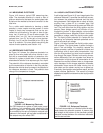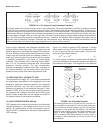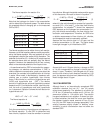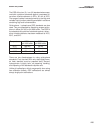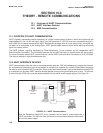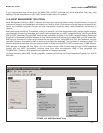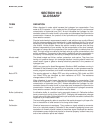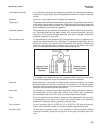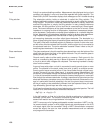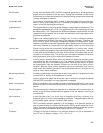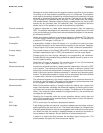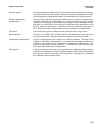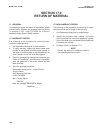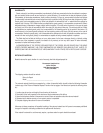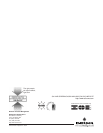
129
MODEL 3081 pH/ORP SECTION 16.0
GLOSSARY
Combination electrode In a combination electrode, the measuring electrode and reference electrode are
combined in a single body. Often the temperature element is included in the body
as well.
Common A point in a circuit against which voltages are measured.
Diagnostics Diagnostics, also called advanced sensor diagnostics, automatically and continu-
ously monitor the condition of the sensor. Diagnostics warn the user of impending
or existing problems with the sensor. The most useful pH sensor diagnostics are
glass impedance and reference impedance.
Electrode potential Electrode potential is a measure of the tendency of a half reaction to occur as writ-
ten. Electrode potentials are stated relative to a reference electrode, which by
convention is the normal hydrogen electrode. The normal hydrogen electrode is
assigned a potential of zero volts.
Electrochemical cell An electrochemical cell consists of two half reactions occurring in separate con-
tainers connected electrically by a salt bridge. The electrons produced by the oxi-
dation half reaction are consumed by the reduction half reaction. Because the
electrons must pass through an external circuit, they can be made to do useful
work. The drawing below shows a simple electrochemical cell.
The voltage of the electrochemical cell (measured without drawing current from
the cell) is the algebraic sum of the potentials of the two electrodes.
Electrode Electrochemistry is the study of charge transfer across boundaries. The charge
being transferred can be ions or electrons. An electrode is a two-phase system
where the charge transfer across the interface involves electrons. A real physical
electrode may incorporate several boundaries.
Electrolyte An electrolyte is a substance that when dissolved in water produces an apprecia-
ble concentration of ions. Most salts, mineral acids (sulfuric acid, hydrochloric
acid, phosphoric acid, and nitric acid), and most bases are electrolytes.
Error Error is a measure of how closely a measured value agrees with the true value.
In cases where a true value is not known, error usually refers to the difference
between the measured and the generally accepted value.
Error condition An error condition (Std Err, SLOPE Err LO, or SLOPE Err HI) occurs during cali-
bration if standardization offset or the slope exceeds programmed values.
Explosion proof An enclosure is explosion proof if it can withstand an internal explosion without
rupturing and without causing the the ignition of the gas surrounding the enclo-
sure.



